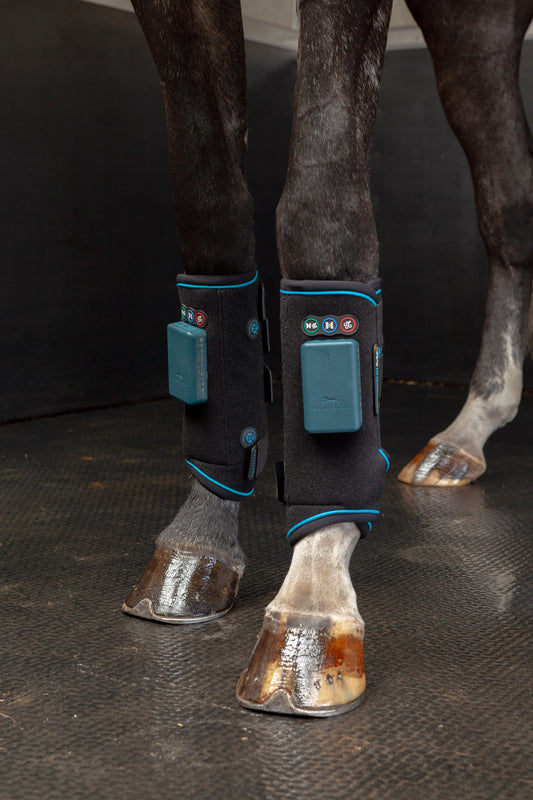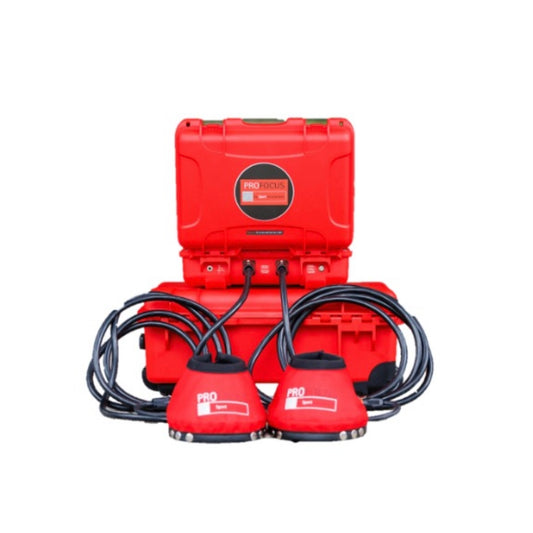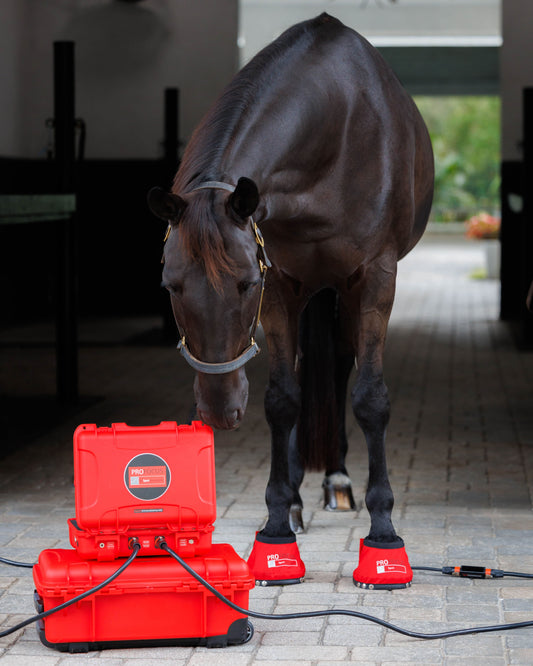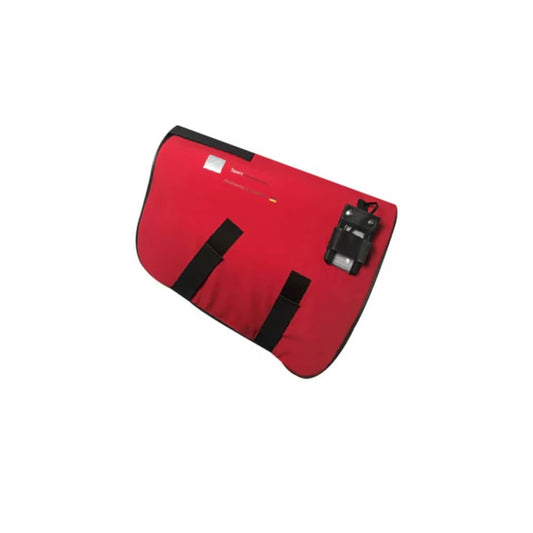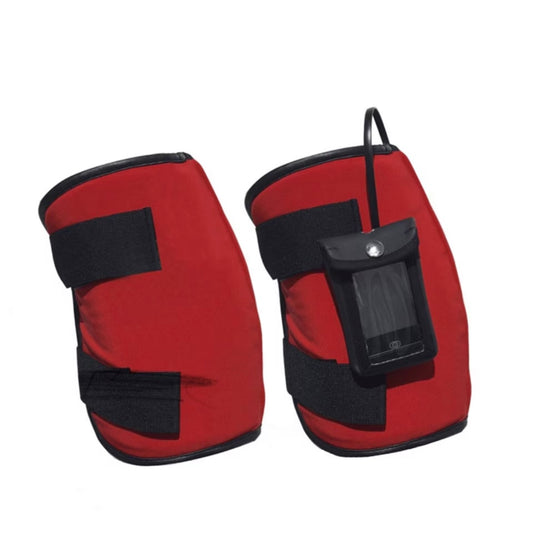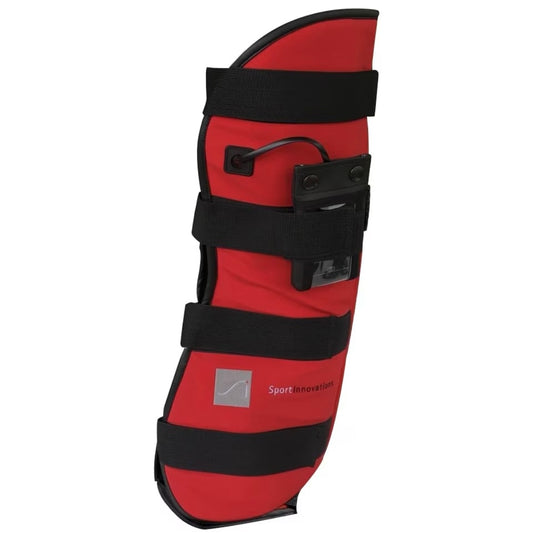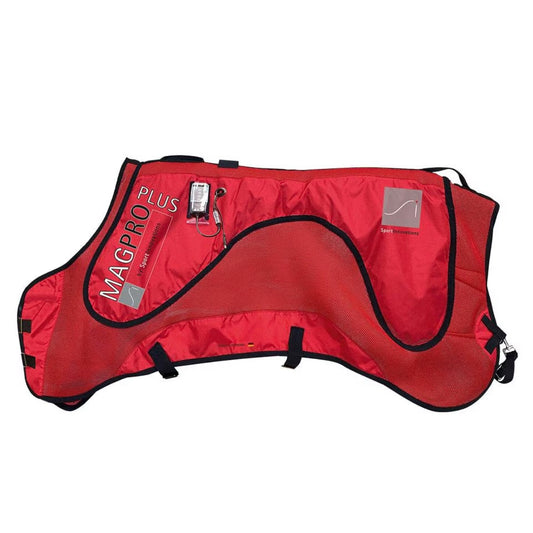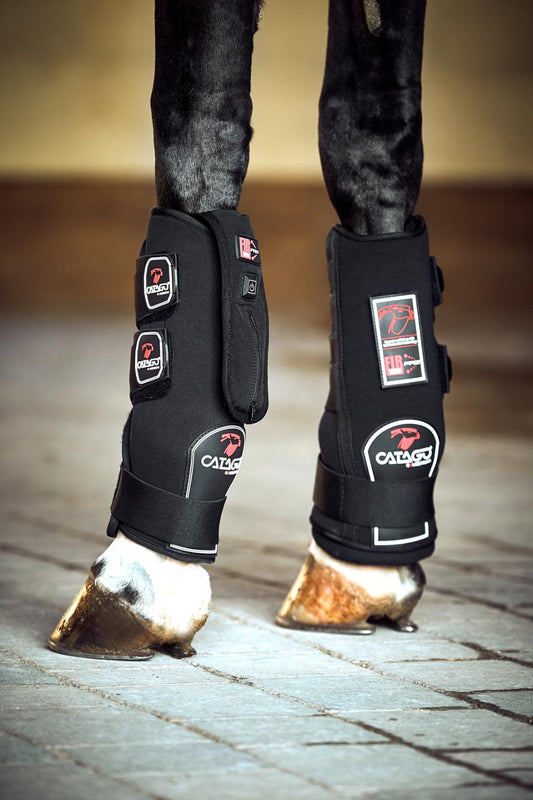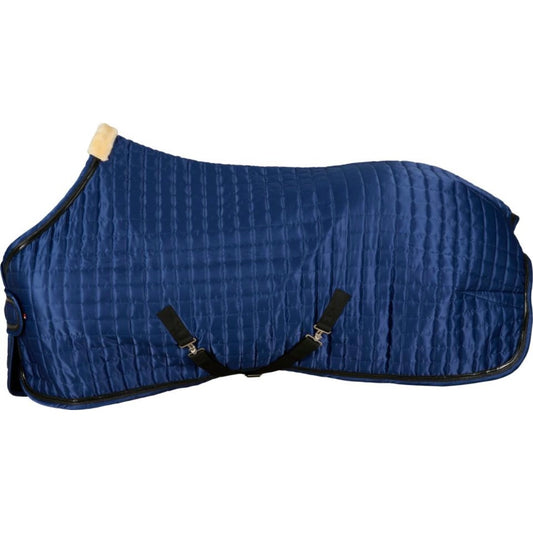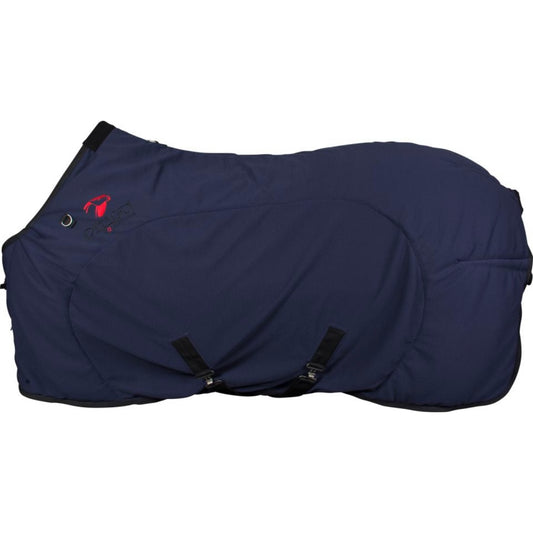Nerve Injuries
Peripheral Nerve Injury
Peripheral nerve injury in horses refers to damage to the nerves located outside the brain and spinal cord. These injuries can lead to sensory and motor dysfunction, significantly affecting the horse's ability to move or feel sensation in the affected limb or area, depending on the location of the damage. Peripheral nerves in the limbs, neck, and head are most commonly affected.
Causes of Peripheral Nerve Injury in Horses
Various factors can contribute to peripheral nerve injury in horses, including:
- Trauma:
- Compression:
- Surgical Complications:
- Infections:
- Prolonged Immobility:
- Toxins:
- Inflammation:
- Metabolic Conditions:
Prevention of Peripheral Nerve Injury in Horses
Preventing peripheral nerve injuries involves careful attention to the horse’s care and environment:
- Proper Hoof and Limb Care:
- Use of Proper Tack:
- Avoid Trauma:
- Supervised Movement:
- Monitoring for Infections:
- Nutritional Support:
What to Do if Your Horse Has Peripheral Nerve Injury
If you suspect your horse has a peripheral nerve injury, quick action is needed to minimize damage and promote recovery:
- Consult a Veterinarian:
- Rest and Box Rest:
- Pain Management:
- Therapeutic Support:
- Physical Therapy:
- Monitor for Complications:
- Surgical Intervention:
Therapies to Improve Recovery from Peripheral Nerve Injury
Several therapies can support the healing and regeneration of peripheral nerves:
- PEMF Therapy (Pulsed Electromagnetic Field Therapy):
- LED Therapy (Laser Therapy):
- Infrared Therapy:
- NMES Therapy (Neuromuscular Electrical Stimulation):
- Vibration Therapy:
- Nutritional Support:
Conclusion
Peripheral nerve injuries in horses require prompt attention and careful management for effective recovery. Early detection, appropriate treatment, and therapies such as PEMF, LED therapy, NMES, and infrared therapy can significantly improve the prognosis. Preventive measures like proper nutrition, controlled movement, and regular veterinary care are essential in minimizing the risk of injury and supporting long-term recovery. By providing comprehensive care, horses with peripheral nerve injuries can experience improved healing and functionality.
Neuropathy
Neuropathy refers to the damage or dysfunction of the peripheral nerves in horses, which are responsible for transmitting signals between the central nervous system (brain and spinal cord) and the limbs, muscles, and organs. Neuropathy can result in weakness, loss of sensation, muscle atrophy, and impaired mobility, coordination, and overall quality of life.
Causes of Neuropathy in Horses
Neuropathy in horses can arise from various factors, including:
- Trauma or Injury:
- Infections:
- Toxins:
- Metabolic Disorders:
- Autoimmune Diseases:
- Chronic Inflammation:
- Nerve Compression:
- Genetic Factors:
- Prolonged Pressure:
Prevention of Neuropathy in Horses
Preventing neuropathy involves a combination of proper care, safety measures, and timely interventions:
- Proper Nutrition:
- Safe Environment:
- Vaccination:
- Regular Veterinary Check-ups:
- Proper Saddle and Tack Fit:
- Stress Management:
- Prompt Treatment of Injuries:
What to Do If Your Horse Has Neuropathy
If you suspect neuropathy in your horse, follow these steps to manage the condition:
- Consult a Veterinarian:
- Rest and Box Rest:
- Pain Management:
- Rehabilitation and Physical Therapy:
- Monitor for Secondary Complications:
- Preventative Measures:
Therapies to Promote Recovery from Neuropathy
Several therapies can support the recovery process and improve nerve function:
- PEMF Therapy (Pulsed Electromagnetic Field Therapy):
- LED Therapy (Laser Therapy):
- Infrared Therapy:
- Vibration Therapy:
- NMES (Neuromuscular Electrical Stimulation):
- Nutritional Support:
Conclusion
Neuropathy in horses can significantly impact mobility and quality of life. Early diagnosis, prompt treatment, and effective therapies like PEMF, LED, infrared therapy, and NMES are essential for managing this condition. Prevention through proper nutrition, safe environments, and regular veterinary care can help reduce the risk of neuropathy. With appropriate intervention, horses with neuropathy can experience recovery and improved function, ensuring better long-term outcomes.
Nerve Compression
Nerve compression in horses refers to the restriction or pressure on the nerves, impairing their function. This condition can result in pain, weakness, muscle atrophy, and even paralysis, depending on the severity and location of the compression. Early identification is critical to prevent long-term damage and ensure effective management.
Causes of Nerve Compression in Horses
Several factors can contribute to nerve compression in horses, including:
- Trauma or Injury:
- Spinal Disorders:
- Incorrect Saddle Fit:
- Excessive or Poor Training:
- Infections or Inflammation:
- Tumors or Abnormal Growths:
- Poor Conformation:
Prevention of Nerve Compression in Horses
While nerve compression cannot always be entirely prevented, the following strategies can help reduce the risk:
- Proper Saddle and Tack Fit:
- Strengthening and Conditioning:
- Proper Training Techniques:
- Regular Veterinary Checkups:
- Weight Management:
- Avoiding Unnecessary Trauma:
What to Do if Your Horse Has Nerve Compression
If you suspect nerve compression, here’s how to manage the condition:
- Consult a Veterinarian:
- Box Rest and Limited Activity:
- Pain Management:
- Monitor for Progression:
- Muscle Support and Rehabilitation:
Therapies to Aid Recovery from Nerve Compression
Several therapies can support recovery from nerve compression and improve the horse’s well-being:
- PEMF Therapy (Pulsed Electromagnetic Field Therapy):
- Infrared Therapy:
- LED Therapy (Laser Therapy):
- NMES (Neuromuscular Electrical Stimulation):
- Vibration Therapy:
- Cooling Therapy:
- Massage Therapy:
Conclusion
Nerve compression in horses can result in significant pain and mobility issues if not managed effectively. Early detection, preventive measures like proper saddle fit and conditioning, and the use of therapeutic treatments such as PEMF therapy, infrared therapy, and NMES are essential for managing the condition. With the right care, therapy, and monitoring, horses with nerve compression can recover and return to normal activity.


